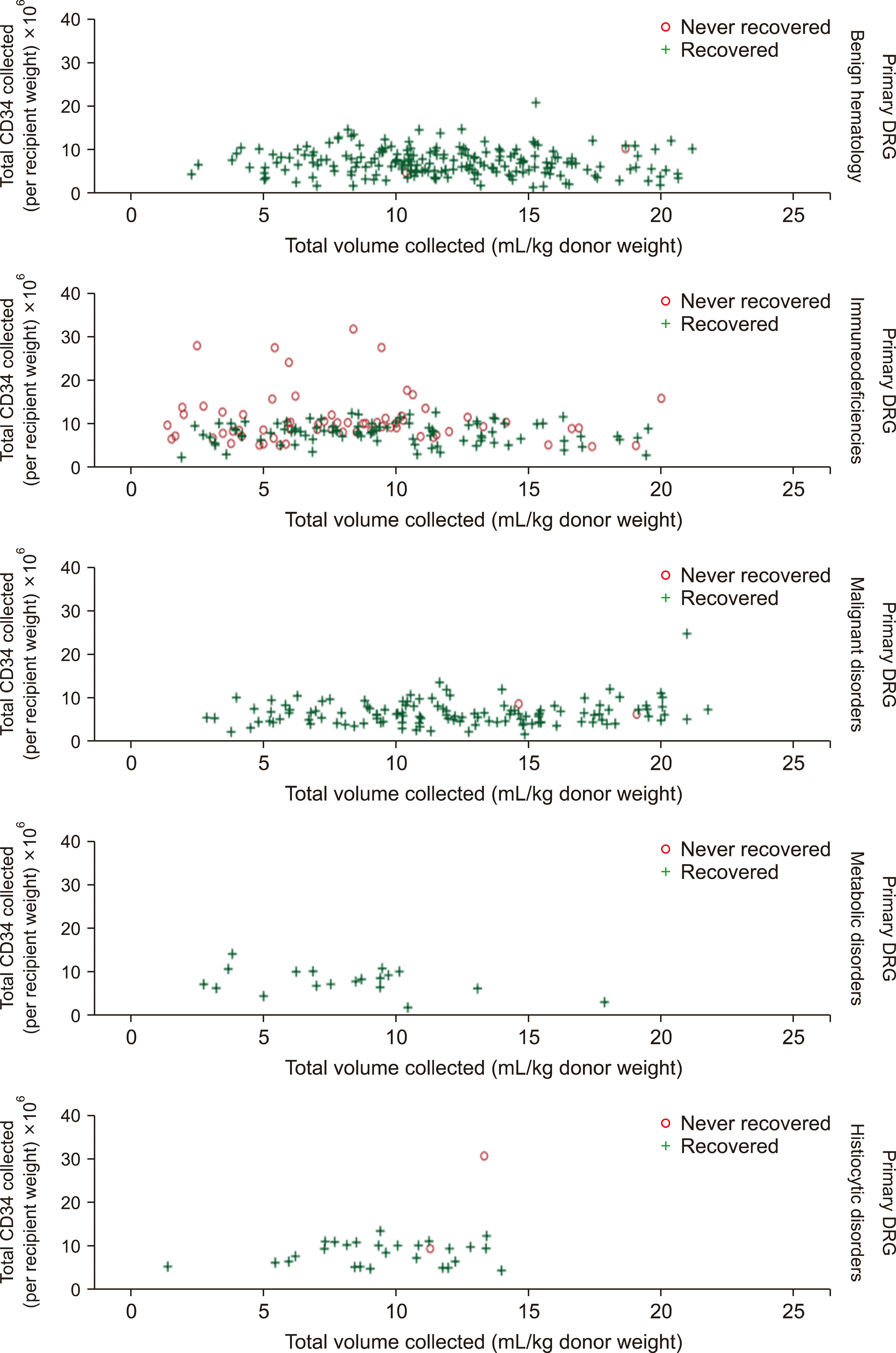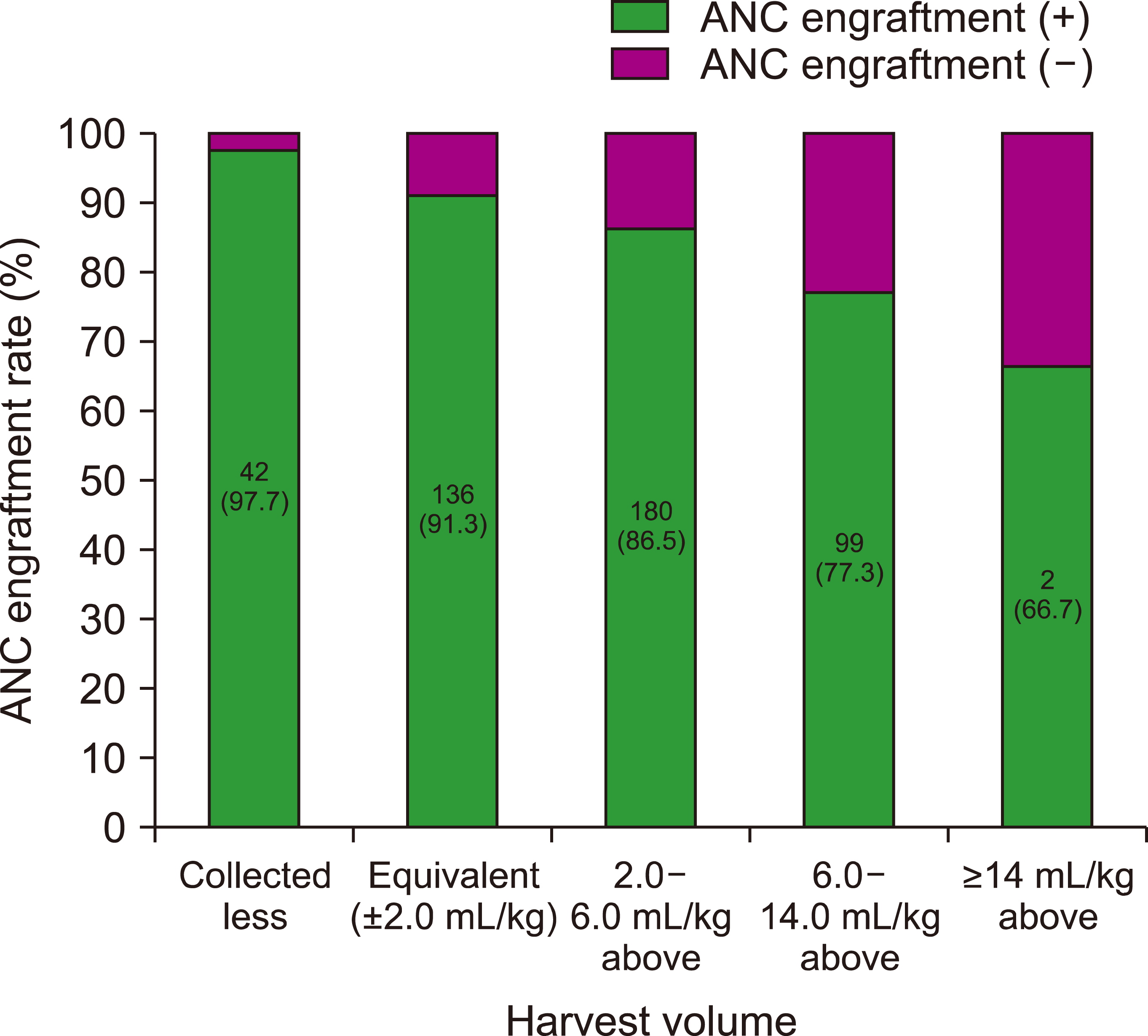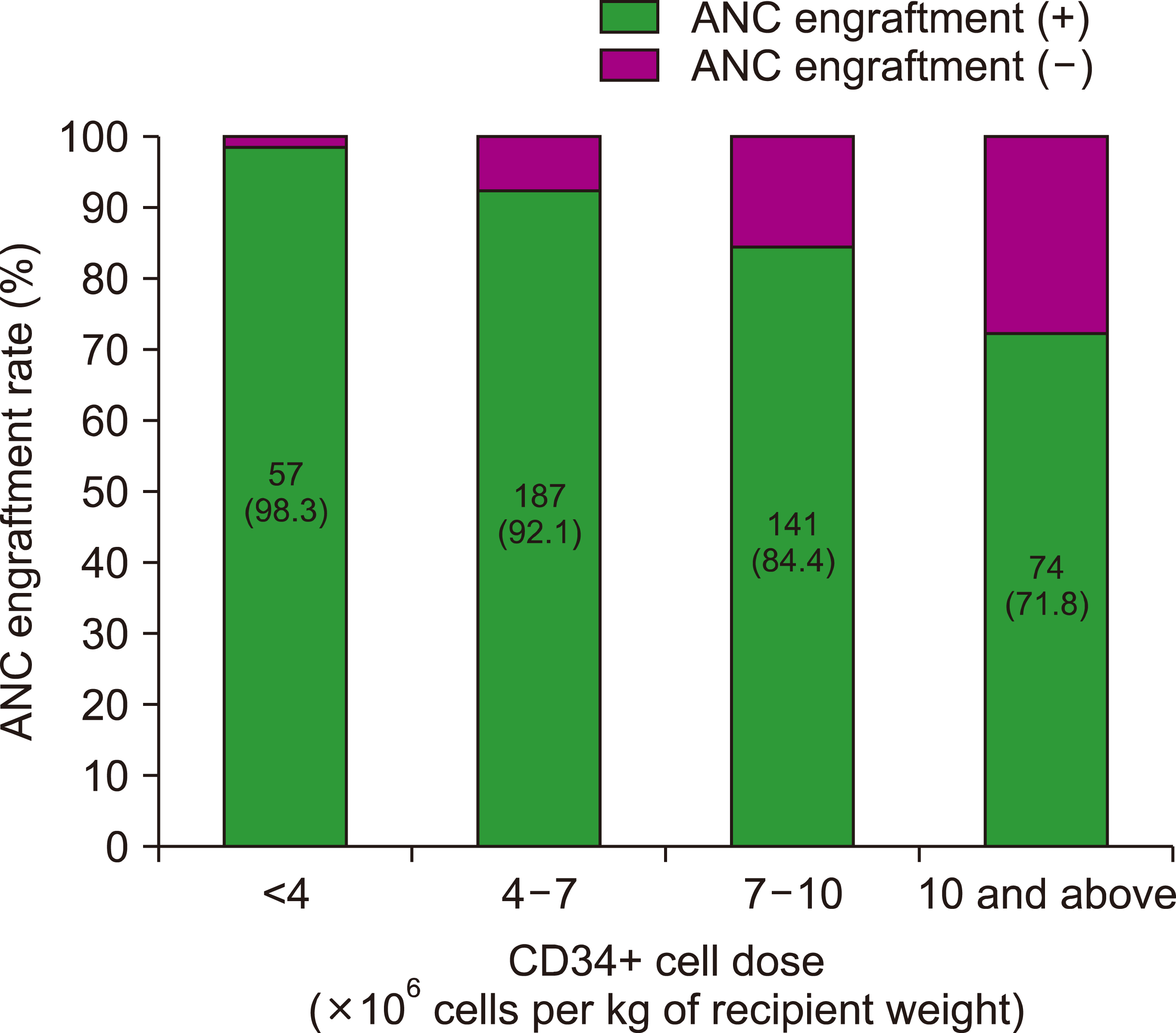1. Behfar M, Faghihi-Kashani S, Hosseini AS, Ghavamzadeh A, Hamidieh AA. 2018; Long-term safety of short-term administration of filgrastim (rhG-CSF) and leukophresis procedure in healthy children: application of peripheral blood stem cell collection in pediatric donors. Biol Blood Marrow Transplant. 24:866–70. DOI:
10.1016/j.bbmt.2017.12.786. PMID:
29284143.

2. Styczynski J, Balduzzi A, Gil L, et al. 2012; Risk of complications during hematopoietic stem cell collection in pediatric sibling donors: a prospective European Group for Blood and Marrow Trans-plantation Pediatric Diseases Working Party study. Blood. 119:2935–42. DOI:
10.1182/blood-2011-04-349688. PMID:
22160619.

3. Panch SR, Szymanski J, Savani BN, Stroncek DF. 2017; Sources of hematopoietic stem and progenitor cells and methods to optimize yields for clinical cell therapy. Biol Blood Marrow Transplant. 23:1241–9. DOI:
10.1016/j.bbmt.2017.05.003. PMID:
28495640.

5. Deotare U, Al-Dawsari G, Couban S, Lipton JH. 2015; G-CSF-primed bone marrow as a source of stem cells for allografting: revisiting the concept. Bone Marrow Transplant. 50:1150–6. DOI:
10.1038/bmt.2015.80. PMID:
25915812.

6. Furey A, Rastogi S, Prince R, et al. 2018; Bone marrow harvest in pediatric sibling donors: role of granulocyte colony-stimulating factor priming and CD34
+ cell dose. Biol Blood Marrow Transplant. 24:324–9. DOI:
10.1016/j.bbmt.2017.10.031. PMID:
29074373.
7. Stroncek DF, Holland PV, Bartch G, et al. 1993; Experiences of the first 493 unrelated marrow donors in the National Marrow Donor Program. Blood. 81:1940–6. DOI:
10.1182/blood.V81.7.1940.1940. PMID:
8461478.

9. Yabe M, Morimoto T, Shimizu T, et al. 2014; Feasibility of marrow harvesting from pediatric sibling donors without hematopoietic growth factors and allotransfusion. Bone Marrow Transplant. 49:921–6. DOI:
10.1038/bmt.2014.73. PMID:
24777192.

10. Bittencourt H, Rocha V, Chevret S, et al. 2002; Association of CD34 cell dose with hematopoietic recovery, infections, and other outcomes after HLA-identical sibling bone marrow transplantation. Blood. 99:2726–33. DOI:
10.1182/blood.V99.8.2726. PMID:
11929759.

11. Lannert H, Able T, Becker S, et al. 2008; Optimizing BM harvesting from normal adult donors. Bone Marrow Transplant. 42:443–7. DOI:
10.1038/bmt.2008.196. PMID:
18622419.

12. Lisenko K, Stadtherr P, Bruckner T, et al. 2016; Bone marrow harvesting of allogeneic donors in an outpatient setting: a single-center experience. Biol Blood Marrow Transplant. 22:470–4. DOI:
10.1016/j.bbmt.2015.10.025. PMID:
26551634.

13. Frangoul H, Nemecek ER, Billheimer D, et al. 2007; A prospective study of G-CSF primed bone marrow as a stem-cell source for allogeneic bone marrow transplantation in children: a Pediatric Blood and Marrow Transplant Consortium (PBMTC) study. Blood. 110:4584–7. DOI:
10.1182/blood-2007-07-101071. PMID:
17827386.
14. Glucksberg H, Storb R, Fefer A, et al. 1974; Clinical manifestations of graft-versus-host disease in human recipients of marrow from HL-A-matched sibling donors. Transplantation. 18:295–304. DOI:
10.1097/00007890-197410000-00001. PMID:
4153799.

15. Jagasia MH, Greinix HT, Arora M, et al. 2015; National Institutes of Health Consensus Development Project on Criteria for Clinical Trials in chronic graft-versus-host disease: I. The 2014 Diagnosis and Staging Working Group report. Biol Blood Marrow Transplant. 21:389–401. e1DOI:
10.1016/j.bbmt.2014.12.001. PMID:
25529383. PMCID:
PMC4329079.

16. Holtan SG, DeFor TE, Lazaryan A, et al. 2015; Composite end point of graft-versus-host disease-free, relapse-free survival after allogeneic hematopoietic cell transplantation. Blood. 125:1333–8. DOI:
10.1182/blood-2014-10-609032. PMID:
25593335. PMCID:
PMC4335084.

17. Rustia E, Violago L, Jin Z, et al. 2016; Risk factors and utility of a risk-based algorithm for monitoring cytomegalovirus, Epstein-Barr virus, and adenovirus infections in pediatric recipients after allogeneic hematopoietic cell transplantation. Biol Blood Marrow Transplant. 22:1646–53. DOI:
10.1016/j.bbmt.2016.05.014. PMID:
27252110. PMCID:
PMC5496767.

18. Satwani P, Baldinger L, Freedman J, et al. 2009; Incidence of viral and fungal infections following busulfan-based reduced-intensity versus myeloablative conditioning in pediatric allogeneic stem cell transplantation recipients. Biol Blood Marrow Transplant. 15:1587–95. DOI:
10.1016/j.bbmt.2009.08.006. PMID:
19896083.

19. Ince EU, Ileri T, Dogu F, et al. 2015; The impact of donor age and sex on the nucleated cell count and CD34 count in healthy bone marrow donors. Pediatr Transplant. 19:385–90. DOI:
10.1111/petr.12453. PMID:
25761650.

20. Kałwak K, Porwolik J, Mielcarek M, et al. 2010; Higher CD34(+) and CD3(+) cell doses in the graft promote long-term survival, and have no impact on the incidence of severe acute or chronic graft-versus-host disease after in vivo T cell-depleted unrelated donor hematopoietic stem cell transplantation in children. Biol Blood Marrow Transplant. 16:1388–401. DOI:
10.1016/j.bbmt.2010.04.001. PMID:
20382248.
21. Lee JW, Kim SK, Jang PS, et al. 2015; Impact of CD34+ cell dose in children who receive unrelated PBSCT with in vivo T-cell depletion for hematologic malignancies. Bone Marrow Transplant. 50:68–73. DOI:
10.1038/bmt.2014.202. PMID:
25265463.

22. Pulsipher MA, Levine JE, Hayashi RJ, et al. 2005; Safety and efficacy of allogeneic PBSC collection in normal pediatric donors: the pediatric blood and marrow transplant consortium experience (PBMTC) 1996-2003. Bone Marrow Transplant. 35:361–7. DOI:
10.1038/sj.bmt.1704743. PMID:
15608659.

23. Wang TF, Chu SC, Chen SH, et al. 2011; The effect of different harvest strategies on the nucleated cell yields of bone marrow collection. Biol Blood Marrow Transplant. 17:351–5. DOI:
10.1016/j.bbmt.2010.05.013. PMID:
20553925.
24. Shaughnessy PJ, Kissack B, Bickford DJ, et al. 2000; Correlation of CD34+ cell counts with volume of bone marrow collected for allogeneic bone marrow harvests. J Hematother Stem Cell Res. 9:891–4. DOI:
10.1089/152581600750062336. PMID:
11177602.






 PDF
PDF Citation
Citation Print
Print



 XML Download
XML Download